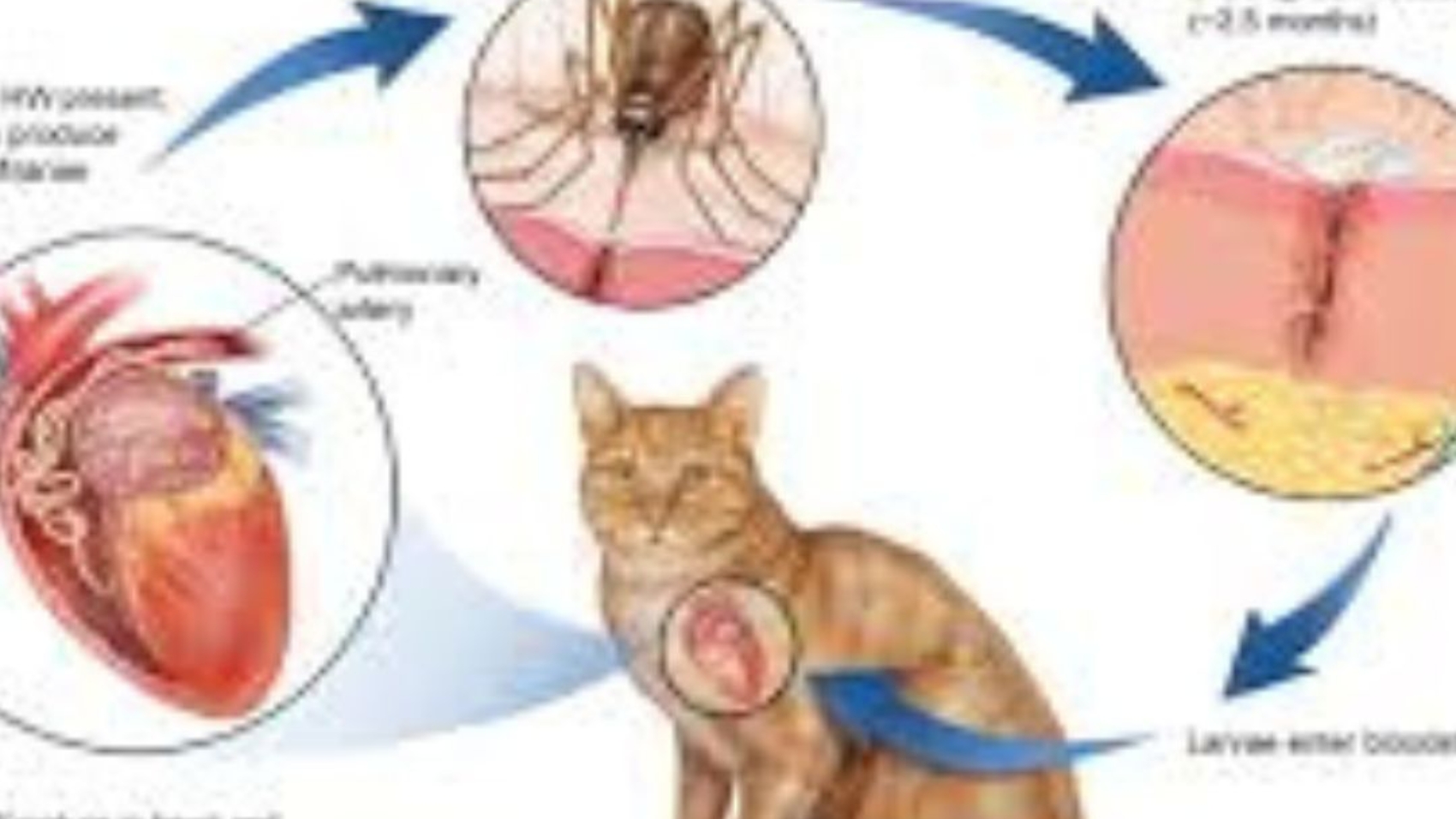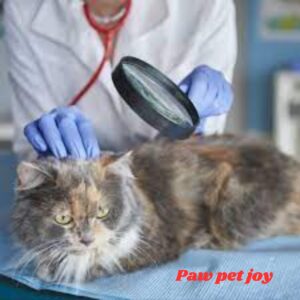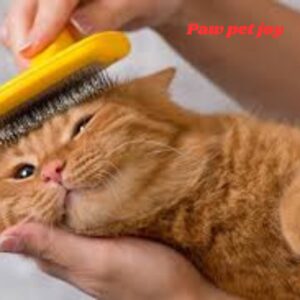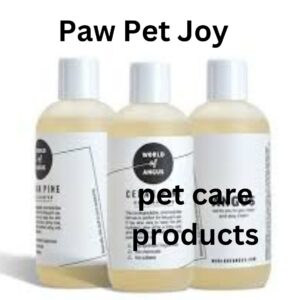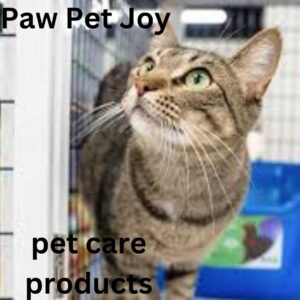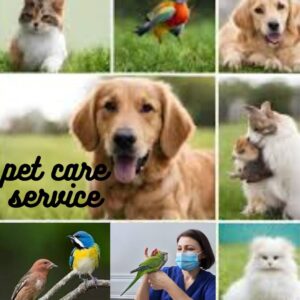Wondering about the benefits and drawbacks of wet cat food vs. dry? Here’s what you need to know to keep your cat healthy.
There are a variety of options to choose from, including wet cat food and dry cat food. Both types of food have their own advantages and considerations to take into account when deciding which one to use for your pet. Wet cat food is often praised for its high moisture content, which can help keep your cat hydrated and prevent urinary tract issues. On the other hand, dry cat food is typically more convenient and can be left out for your cat to nibble on throughout the day. Factors such as your cat’s age, health, and preferences can all play a role in deciding whether to feed wet cat food vs dry .
Wet Cat Food vs. Dry: How Are They Different?
To better understand which of these options is best for your cat, it’s important to look at the actual differences between wet cat foods vs. dry. The primary characteristics that differentiate the two are:
- Moisture level
- Cost
- Maintenance and storage requirements
- Method of development
- Appeal
- Nutrition
The Obvious Difference: Moisture Level
When it comes to choosing between wet cat food and dry cat food, one of the most obvious differences is the moisture level. Wet cat food contains a higher moisture content compared to dry cat food, which typically has only around 7-10% moisture.
Cats are naturally designed to get most of their hydration from their food, as their wild ancestors would have typically consumed prey with a high water content. This means that incorporating wet cat food into your cat’s diet can help ensure that they are getting enough water to stay properly hydrated.
For cat owners who have cats that are not great water drinkers or who may be prone to urinary tract issues, feeding wet cat food can be a beneficial way to increase their fluid intake and support their overall health. Adequate hydration is essential for maintaining kidney function and overall well-being in cats.
On the other hand, dry cat food can be a more convenient option for pet owners who are often away from home or have busy schedules. Dry cat food is easy to leave out for free-feeding throughout the day, as it does not spoil as quickly as wet cat food and does not need to be refrigerated once opened.
However, it is important to keep in mind that cats may not drink enough water to compensate for the lack of moisture in dry cat food. This can potentially lead to issues such as dehydration, urinary tract problems, and kidney issues in the long run.
If you do choose to feed your cat primarily dry cat food, it is essential to make sure that they have access to fresh water at all times. Some cat owners find that incorporating wet cat food into their cat’s diet a few times a week can help supplement their water intake and provide additional hydration.
Ultimately, the decision between wet cat food and dry cat food will depend on your cat’s individual needs and preferences. Some cats may have specific dietary requirements or health issues that make one type of food more beneficial than the other.
If you are unsure of which type of food to choose for your cat, it is always a good idea to consult with your veterinarian. They can provide guidance on the best diet for your cat based on factors such as age, weight, activity level, and any existing health conditions.

Wet Food Tends to Be More Expensive Than Wet Cat Food vs. Dry
Wet cat food tends to be more expensive than dry cat food for a few reasons. One of the main factors contributing to the higher cost of wet food is the higher moisture content. Wet cat food contains a significant amount of water, typically around 75-78%, compared to dry cat food which only contains about 10%. This means that you are essentially paying for water when you purchase wet cat food, which can drive up the cost.
Another reason why wet cat food tends to be more expensive is the higher quality of ingredients used in many wet food formulas. Wet cat food often contains a higher percentage of real meat or animal by-products, which can be more costly to produce than the plant-based ingredients found in some wet cat food vs dry. Additionally, many wet cat food brands pride themselves on using premium ingredients and avoiding fillers, artificial flavors, and preservatives, which can also contribute to the higher cost.
In addition to the ingredients themselves, the packaging of wet cat food can also contribute to its higher cost. Wet cat food is typically sold in cans, trays, or pouches, which can be more expensive to produce and store than the bags used for dry cat food. The packaging of wet cat food also tends to be more substantial and higher quality to prevent leaks and maintain freshness, which can also add to the overall cost.
Another factor that can drive up the cost of wet cat food is the manufacturing process. Producing wet cat food involves cooking and canning or pouching the food to preserve moisture and maintain freshness. This process requires specialized equipment and facilities, as well as more labor-intensive handling compared to the production of wet cat food vs dry. These additional steps in the manufacturing process can add to the cost of wet cat food compared to dry cat food.

Dry and Wet Cat Food Need Different Maintenance and Storage Wet Cat Food vs. Dry
When it comes to feeding your cat, it’s important to consider not only the type of food you’re giving them but also how to properly store and maintain it. Dry cat food and wet cat food have different needs when it comes to storage and maintenance, so it’s crucial to understand these differences in order to keep your pet healthy and happy.
Wet Cat Food vs. Dry is much easier to store than wet cat food since it doesn’t need to be refrigerated. You can simply keep it in its original packaging or transfer it to an airtight container to keep it fresh. Make sure to store dry cat food in a cool, dry place away from sunlight to prevent it from spoiling. Additionally, be mindful of the expiration date on the packaging and discard any food that is past its prime.
When it comes to maintenance, dry cat food is easy to measure out and serve. You can leave dry food out for your cat to graze on throughout the day without worrying about it spoiling. However, it’s important to monitor your cat’s intake to prevent overeating and obesity. Make sure to provide fresh water at all times, as cats on a dry food diet may not get enough moisture from their food alone.
On the other hand, wet cat food requires more careful maintenance and storage. Since wet cat food is perishable, it must be refrigerated once opened to prevent bacterial growth. You can store any unused portions in the fridge for up to a few days, but be sure to cover it tightly with plastic wrap or transfer it to an airtight container. Check the food before serving it to your cat to ensure it hasn’t spoiled or developed an off odor Wet Cat Food vs. Dry
.
When feeding your cat wet food, it’s best to serve it at room temperature to enhance the flavor and aroma. You can warm up the food slightly by placing it in a bowl of warm water or microwaving it for a few seconds, but be sure to stir it well and check the temperature before serving it to your cat. Never serve hot food to your cat, as it can burn their mouth and cause injury.
Wet Cat Food vs. Dry of portion control, wet cat food can be a bit trickier than dry food. Since it comes in individual servings, you’ll need to monitor how much your cat is eating and adjust accordingly. It’s important not to leave wet food out for too long, as it can spoil quickly and become a breeding ground for bacteria. Always discard any uneaten portions to prevent your cat from getting sick.

Dry Cat Food Is Made Differently from Wet Food Wet Cat Food vs. Dry
Wet Cat Food vs. Dry is made through a process known as extrusion. This involves mixing all the ingredients together, including protein sources, grains, vitamins, and minerals, and then cooking them at high temperatures. The mixture is then forced through a machine that shapes the food into small pieces, which are then dried to remove any remaining moisture. This process helps to create crunchy kibbles that are easy for cats to chew and digest.
On the other hand, Wet Cat Food vs. Dry is made by mixing all the ingredients together and then cooking them at lower temperatures. This helps to retain more moisture in the final product, resulting in a semi-soft consistency that many cats find appealing. Wet cat food typically comes in cans or pouches and is often more palatable for picky eaters or cats with dental issues.
One of the key differences between dry and wet cat food is their moisture content. Dry cat food contains only about 10% moisture, while wet cat food can have as much as 80% moisture. This higher moisture content can be beneficial for cats who don’t drink enough water throughout the day, as it helps to keep them hydrated. However, it also means that wet cat food has a shorter shelf life once opened and can spoil more quickly than Wet Cat Food vs. Dry
.Another important difference between dry and wet cat food is their nutrient profiles. Dry cat food often contains more carbohydrates and fiber than wet cat food, which can help to promote healthy digestion and reduce the risk of constipation. On the other hand, wet cat food is higher in protein and fat, which are essential for maintaining a cat’s energy levels and overall health Wet Cat Food vs. Dry
The texture of dry and wet cat food also plays a role in their appeal to feline taste buds. Some cats prefer the crunchiness of dry kibble, while others enjoy the smooth texture of wet food. It’s important to consider your cat’s preferences when choosing between the two options, as a happy cat is more likely to eat a balanced diet and maintain a healthy weight Wet Cat Food vs. Dry
.Finally, the cost and convenience of dry and wet cat food can also influence your decision. Dry cat food is typically less expensive per serving than wet food and can be left out for longer periods without spoiling. This makes it a convenient option for busy pet owners or those on a tight budget. On the other hand, wet cat food can be more expensive and may require refrigeration once opened, but many cat owners find that the benefits outweigh the extra cost.

Wet Food Is Often More Appealing to Picky Felines
If you have a picky eater on your hands, you may find that wet cat food is the way to go to entice them to eat. The high moisture content in wet food can make it more appealing to cats who are reluctant to eat dry kibble. The extra moisture in wet food not only helps to keep your cat hydrated, but it also provides a more enticing texture and aroma that can appeal to even the most finicky feline taste buds.
Some cats are simply more drawn to the smell and flavor of wet food, which can make mealtime more enjoyable for them. Wet food often comes in a variety of flavors and textures, allowing you to find the perfect option to suit your cat’s preferences. The added variety in wet food can help prevent mealtime boredom and encourage your cat to eat a balanced diet Wet Cat Food vs. Dry

- Nutrition Content of Wet Cat Food vs. Dry
When it comes to the nutrition content of wet cat food versus dry cat food, there are some key differences to consider. Wet cat food typically contains higher moisture levels, which can be beneficial for cats who don’t drink enough water on their own. This can help prevent urinary tract issues and keep your feline friend hydrated.
In terms of protein content, wet cat food usually contains higher levels of animal-based proteins, which are more easily digestible for cats. This can be particularly important for cats with sensitive stomachs or digestive issues. On the other hand, dry cat food tends to have higher carbohydrate levels, which can be less ideal for cats, since their bodies are designed to primarily digest proteins and fats.
Another important factor to consider is the fat content of wet versus dry cat food. Wet cat food often contains higher levels of healthy fats, which can be beneficial for your cat’s skin and coat health. These fats also provide a source of energy for your pet. Dry cat food, on the other hand, can sometimes have added fats to make it more palatable, but they may not be as high-quality as the fats found in wet cat food vs dry.
Vitamins and minerals are also an important consideration when comparing wet and dry cat food. Wet cat food typically contains more moisture, which can help cats absorb essential nutrients more easily. It also tends to have fewer preservatives, which can be beneficial for cats with food sensitivities. Dry cat food, however, often includes added vitamins and minerals to ensure a balanced diet for your cat.
It’s important to note that both wet and dry cat food can provide a complete and balanced diet for your pet. The key is to choose a high-quality cat food that meets your cat’s individual nutritional needs. If your cat has specific dietary requirements or health issues, it’s always a good idea to consult with your veterinarian to determine the best food for your pet.
Questions to Consider When Comparing Wet Cat Food vs. Dry
Here are several questions to consider when choosing between wet cat foods vs. dry:
- Is my cat overweight?
- Does my cat need additional hydration?
- Does my cat have dental issues?
- What will my cat eat?
- Can I use a combination of wet and dry food for my cat?
Is My Cat Overweight or Obese?
When it comes to feeding your cat, one important factor to consider is their weight.
How do you know if your cat is overweight or obese? One simple way to determine this is by feeling their ribs. You should be able to easily feel your cat’s ribs without pressing too hard. If you have trouble filling their ribs due to a layer of fat, then your cat may be overweight. Another way to tell is by looking at your cat from above. Their waistline should be easily visible, with a noticeable tuck behind their ribs. If your cat’s waistline is not well-defined and they appear round when viewed from above, they may be carrying extra weight Wet Cat Food vs. Dry
Does My Cat Have a Health Condition That Requires Additional Water Intake?
If your cat has a health condition that requires additional water intake, you may need to consider whether wet or dry cat food is best for them. Certain health conditions can make it difficult for cats to stay properly hydrated, so providing them with additional water through their diet can be beneficial. One common health condition that may require additional water intake is kidney disease. Cats with kidney disease often have trouble concentrating their urine, leading to increased thirst and urination. In these cases, ensuring that your cat has access to plenty of water is important. Wet cat food can be a good option for cats with kidney disease, as it contains a higher moisture content than dry food, helping to keep your cat hydrated Wet Cat Food vs. Dry
.
Are My Cat’s Teeth and Gums Healthy and Strong?
Cats can also develop dental issues such as plaque, tartar, and gum disease if their teeth and gums are not properly taken care of. One of the benefits of feeding your cat dry food is that it can help keep their teeth clean. The crunchiness of the kibble helps to scrape away plaque and tartar buildup on their teeth as they chew. This can help prevent the formation of dental problems and keep their teeth and gums healthy and strong. On the other hand, wet cat food does not have the same abrasive effect on the teeth as dry food. Since wet food is soft and moist, it is less likely to remove plaque and tartar buildup on the teeth. This can lead to a higher risk of dental issues such as tooth decay and gum disease in cats that exclusively eat Wet Cat Food vs. Dry
What Kind of Food Is My Cat Willing to Eat?
Cats can be notoriously picky eaters, so it’s important to consider what kind of food your pet is willing to eat when deciding between wet and dry cat food. Some cats have a strong preference for one type of food over the other, while others may be more open to trying different options. If your cat has been eating dry food for most of their life, they may be hesitant to switch to wet food. Cats can become attached to the taste and texture of their food, so making a sudden change could lead to them refusing to eat altogether. It’s best to gradually introduce wet food into their diet by mixing it in with their dry food and slowly increasing the ratio over time. On the other hand, some cats are immediately drawn to wet food due to its strong aroma and moisture content. wet cat food vs dry tends to be more appealing to cats because it closely resembles the texture of prey animals, which is what they would naturally eat in the wild. If your cat has a history of turning their nose up at dry food, Wet Cat Food vs. Dry may be a better option to ensure they are getting the nutrients they need.
Does My Cat Have Specific Nutritional Needs?
Cat have specific nutritional needs that must be met in order to keep them healthy and happy. These needs are determined by factors such as their age, weight, activity level, and any medical conditions they may have. It is important to take all of these factors into consideration when choosing the right type of food for your cat. When it comes to wet cat food vs. dry cat food, it is important to consider your cat’s specific nutritional needs. Wet cat food tends to have a higher moisture content, which can be beneficial for cats who do not drink enough water on their own. This can be especially important for cats with kidney disease or urinary tract issues. On the other hand, dry cat food is often higher in carbohydrates and may not be the best choice for cats with diabetes or obesity.
Will a Combination of Wet and Dry Food Work for My Cat?
Many cat owners wonder if they can provide a combination of wet and dry food for their pet. The answer is yes, in most cases, combining wet and dry food can be a great way to ensure your cat is getting a well-rounded diet. There are a few benefits to offering both wet and dry food to your cat. Wet food provides hydration and can be especially beneficial for cats who don’t drink enough water on their own. Additionally, wet food tends to be higher in protein and lower in carbohydrates than dry food, making it a great option for cats who need a protein-rich diet. On the other hand, dry food is convenient and can help keep your cat’s teeth clean by promoting chewing. Dry food is also typically more calorie-dense than wet food, so it can be a good option for cats who need to gain weight.
Wet vs. Dry Is Just One Piece of the Cat Diet Puzzle
When it comes to feeding your cat, the debate between wet and dry food is just one piece of the puzzle. While the type of food you choose is important, it’s also crucial to consider factors like your cat’s age, health, activity level, and personal preferences.
For example, if you have a senior cat with dental issues, wet food may be a better choice because it is easier for them to chew and digest. On the other hand, if you have a young, active cat, dry food may be more convenient because it can be left out for longer periods of time without spoiling.
Conclusion:
Both Wet Cat Food vs. Dry can provide essential nutrients for your pet. Wet food is great for hydration and picky eaters, while dry food is convenient and can help with dental health. Ultimately, the decision on which to use should be based on your cat’s specific needs and preferences. It’s always a good idea to consult with your veterinarian to determine the best diet for your cat. Remember, the most important thing is keeping your cat happy, healthy, and well-fed!








